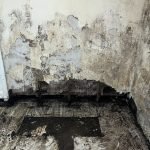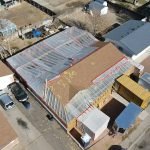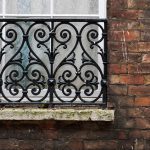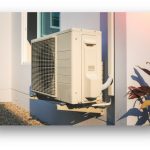
How, When and Where Mold Occurs
Mold is actually a part of the plant species. Similarly to other allergens, it releases mold spores that can cause allergic reactions leading to health care concerns or symptoms that may mimic a severe cold. If you are a homeowner, or even if you or your children experience such health problems, it is important to know a few things about mold that may help you prevent mold exposure or mold problems in your home.
Becoming aware of how the mold forms, where it forms, and the measures that you can take to prevent its formation, is key to keeping your home and family safe. Below are ways you can eliminate and prevent many types of mold in your home.
HOW DOES MOLD OCCUR?
According to the CDC, mold is found both indoors and outdoors, and can grow on almost any substance when moisture is present. They reproduce by spores, in which their molecules are carried by air. It can enter your home through open doorways, windows, vents, and heating and air conditioning systems.
Mold in the air outside can also attach itself to clothing, shoes, and pets can and be carried indoors. When mold spores drop on places where there is excessive moisture, such as where leakage may have occurred in roofs, pipes, walls, plant pots, or where there has been flooding, they will grow. They reproduce by spores, in which their molecules are carried by air. When spores land on a moist surface suitable for life, they begin to reproduce.
Many building materials provide suitable nutrients that encourage mold to grow. Wet cellulose materials, including paper and paper products, cardboard, ceiling tiles, wood, and wood products, are particularly conducive for the growth of some molds. Other materials such as dust, paints, wallpaper, insulation materials, drywall, carpet, fabric, and upholstery, commonly support mold growth.
WHEN IS MOLD MOST ACTIVE?
Mold often grows in spring all the way to late fall because the environmental conditions are suitable for it to thrive. Mold does not die with the onset of winter; instead, most of it becomes dormant only to become active once the frost has thawed off.
Though some mold goes on to survive and remain active even through the frost. Mold primarily thrives in conditions that are warm with high humidity, and full of moisture, these are the where there is enough food for it to feed on.
The Centers for Disease Control report that mold will grow where there is moisture, such as around leaks in roofs, windows, or pipes, or where there has been a flood. Mold grows on paper, cardboard, ceiling tiles, and wood. Mold can also grow in dust, paints, wallpaper, insulation, drywall, carpet, fabric, and upholstery.
The CDC also recommends controlling mold growth inside your home by doing the following:
- Controlling humidity levels;
- Promptly fixing leaky roofs, windows, and pipes;
- Thoroughly cleaning and drying after flooding;
- Ventilating shower, laundry, and cooking areas.
WHERE DOES MOLD GROW?
Mold grows both outdoors and indoors. Indoor mold thrives in places that are warm. Mold can form within forty-eight hours in a place that is damp and warm. This could include corners in bathrooms, on the carpet, on drapes, on ceilings, and on upholstery.
There are states that are notorious for mold growth, most of which are hot and humid. This does not mean that those who do not live in these weather conditions should not take the necessary precautions to avoid mold growth.
25 Most Humid Cities in the United States
(groundworks 2020)
- Port Arthur, TX — 90% humidity
- Lake Charles, LA — 90% humidity
- Brownsville, TX — 90% humidity
- Victoria, TX — 90% humidity
- Jackson, MS — 90% humidity
- Meridian, MS — 90% humidity
- Quillayute, WA — 89% humidity
- Corpus Christi, TX — 89% humidity
- Baton Rouge, LA — 89% humidity
- Houston, TX — 89% humidity
- Gainesville, FL — 89% humidity
- Saint Paul Island, AK — 88% humidity
- Olympia, WA — 88% humidity
- Jacksonville, FL — 88% humidity
- Fort Myers, FL — 88% humidity
- Orlando, FL — 88% humidity
- Tallahassee, FL — 88% humidity
- Cold Bay, AK — 87% humidity
- San Francisco, CA — 87% humidity
- New Orleans, LA — 87% humidity
- Daytona Beach, FL — 87% humidity
- Shreveport, LA — 87% humidity
- Mobile, AL — 87% humidity
- Montgomery, AL — 87% humidity
- Asheville, NC — 87% humidity
Areas that have experienced flooding, leaks, or recent water damage are perfect for mold formation. If you have had any water leaks from pipes in any area of your house, including the kitchen, you could have mold growing if the area is warm and left damp for a while. Places like you air conditioning system are popular places for leaks to happen and mold to grow. Be sure to check your air conditioner unit often for any signs of black mold or spores and remove it safely.
CDC.gov also strongly suggests that if you choose to remove and clean up mold, you must:
- Never mix bleach with ammonia or other household cleaners. Mixing bleach with ammonia or other cleaning products will produce dangerous, toxic fumes.
- Open windows and doors to provide fresh air.
- Wear non-porous gloves and protective eyewear.
- Small areas (such as a shower, or an area the size of a door) can often be cleaned by residents, but larger areas might need more professional help. Always follow the manufacturer’s instructions when using bleach or any other cleaning product.
If you have an extensive amount of mold and you do not think you can manage the cleanup on your own, you may want to contact a professional who has experience in cleaning mold in buildings and homes.
PREVENTATIVE AND CURATIVE MEASURES
In order to prevent mold growth, the most basic measures would involve dealing with water leaks and cleaning up spills promptly. Leaving spills and leaks to stew for a while leads to a damp environment in which mold thrives.
Another preventative measure, when your home is under construction, is to ensure that your builder knows which materials to use to prevent mold formation. This is crucial information that all builders should have. It does not mean that you will never have mold growing in your home, but at least it assures you that the chances of such an occurrence are few.
Mold growth ought to be prevented and destroyed in cases where it has already formed to safeguard the health of occupants in your house. It would be wise to get the services of a mold specialist instead of getting rid of the mold yourself.
Specialists know how properly set up containment to avoid dispersing spores when removing mold so that it does not transfer to other surfaces. They also know how to clean, treat, and seal the affected area so that the mold does not grow again.





